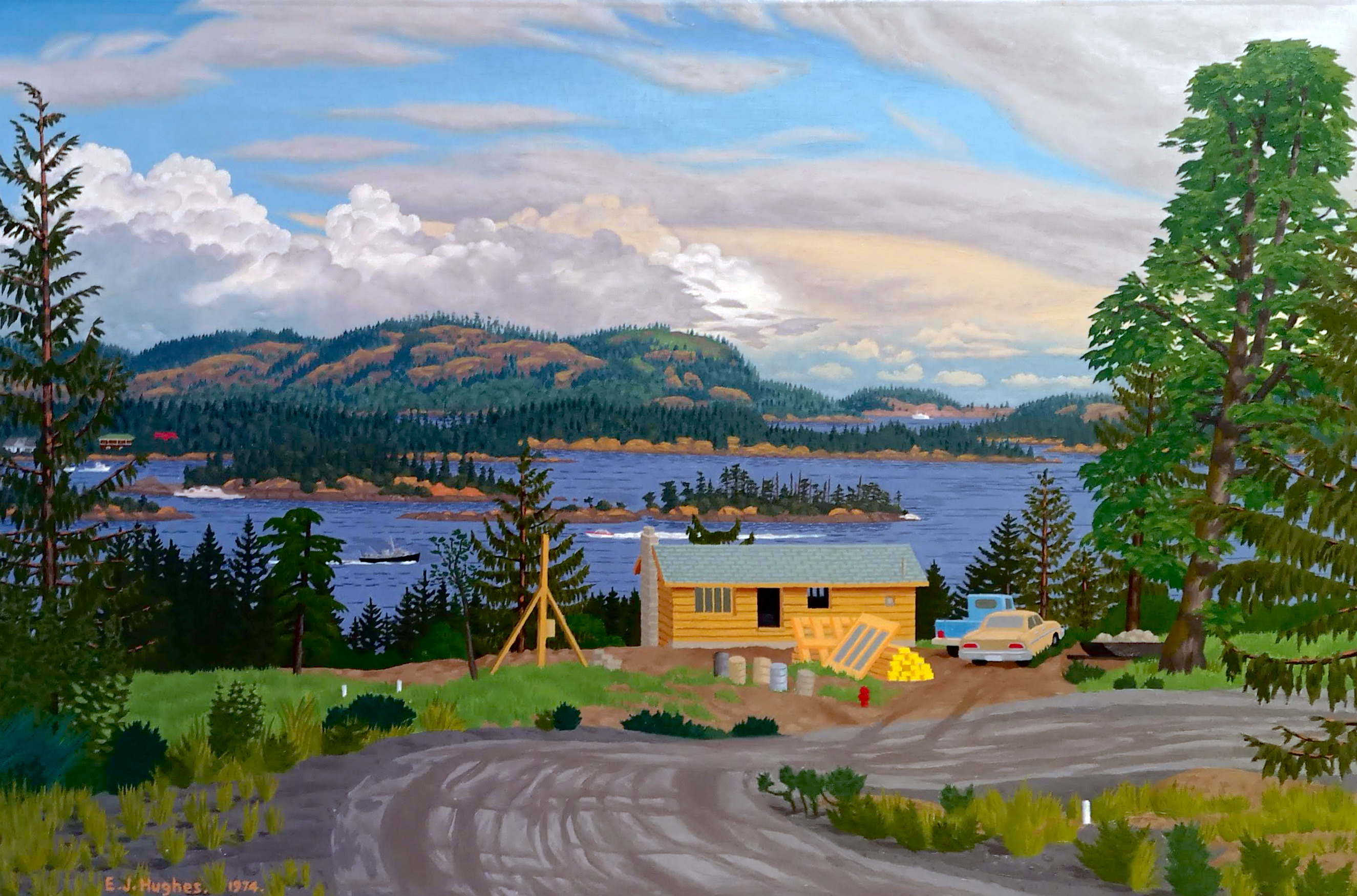
Every month, hundreds of galleries add newly available works by thousands of artists to the Artnet Gallery Network—and every week, we shine a spotlight on one artist you should know. Check out what we have in store, and inquire for more with one simple click.
About the Artist: Twentieth-century Canadian artist E.J. Hughes (1913–2007) is best known for his dynamic depictions of British Columbia’s landscapes and sea vistas, which he painted in a signature style of flattened planes and simplified forms. His works are considered a celebration of the Canadian West Coast. Hughes first worked as a commercial artist and studied under Frederick H. Varley and J.W.G. (Jock) MacDonald, both founding members of the Group of Seven, who ushered in an art movement rooted in Canadian nature. During World War II, Hughes was named an Official Army War Artist. After the war, he was granted an Emily Carr Scholarship to study in Vancouver and joined the Canadian Group of Painters. Now, Madrona Gallery in Victoria, British Columbia, is presenting five rare canvases by the artist in its showcase “Historic and Post-War Canadian Art,” which also features paintings by members of the Group of Seven, as well as works by Jean-Paul Riopelle, Emily Carr, and others. The acclaimed author and Hughes biographer Robert Amos has provided in-depth research on the five works in the show.
E.J. Hughes, Ship at a Wharf—Crofton (1980). Courtesy of Madrona Gallery.
Why We Like It: Rarely do works by Hughes come to market, making this exhibition of five canvases by the important Canadian artist particularly exciting. They evince a keen observation of working-class life in Western Canada: although his paintings may appear idyllic at first glance, a closer look reveals elements of the coastal industry that dominated life in the region.
E.J. Hughes, Kootenay River East of Cranbrook (1977). Courtesy of Madrona Gallery.
According to the Gallery: “Paintings like Ship at a Wharf–Crofton balance the majesty of the West Coast of Canada and its flowing landscape with the right angles of an industrial lumberyard. This allows a subtle commentary about the pride of the community around this industry and its importance to the local economy. Hughes’s perspective embraces his immediate surroundings, rather than a concerning itself with wider art movements of the mid 20th century. This was not through any lack of awareness, but rather the result of a lifelong commitment to his own practice. He chose to focus on the lives of those in his own community, which was based around logging, mining, and fishing. These paintings have become symbols of the history of Western Canada and many families’ history of settlement in this area over the last century,” said Michael Warren, director at Madrona Gallery.
Works by E.J. Hughes can in seen in “Historic and Post-War Canadian Art” at Madrona Gallery through April 2, 2022.